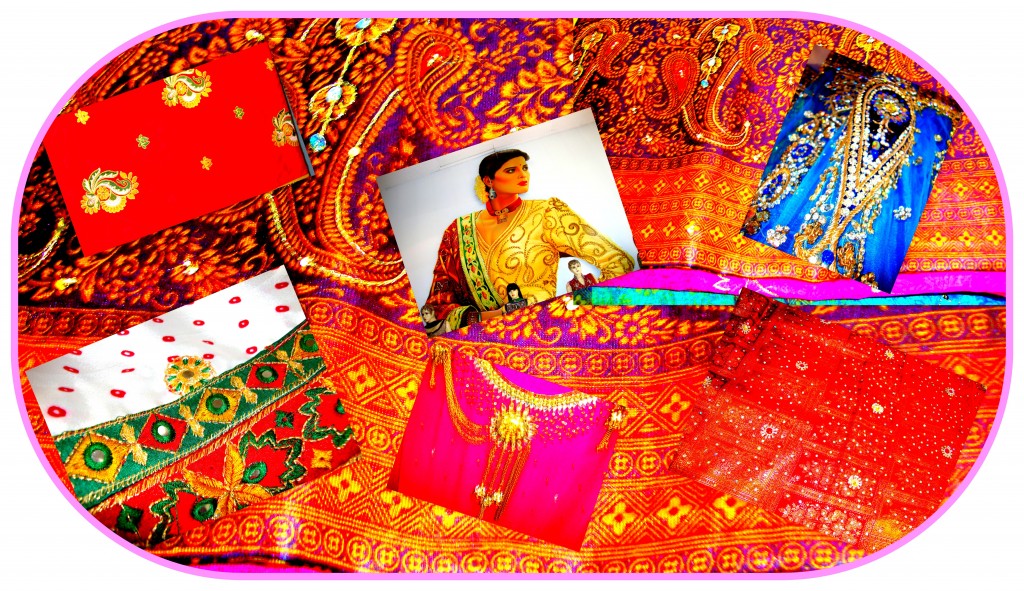
The history of Indian textiles is very ancient. The discovery of several spindles, and a piece of cotton stuck to a silver vase, revealed that the spinning and weaving of cotton was known to the Harrappans, nearly five thousand years ago. References to weaving are found in the history of Vedic literature on the method of spinning the various materials used. The foundations of the Indian textile trade with other countries began as early as the second century BC. A hoard of block printed and resist-dyed fabrics, mainly of Gujrati origin, found in the tombs of Fostat, Egypt, are the proof of large scale Indian export of cotton textiles to Egypt in medieval times.”
We receive some of the most beautifuI textiles from India. I find the sari to be one of the most elegant and beautiful of all dress forms. There is such a wide variety of material to choose from and prices ranging from the very inexpensive to the most expensive. All the images in this collage were taken in Little India, Toronto. One of the store-owners there was so accomodating that he turned all the lights on and gave my friend and I free reign to take as many pictures as we wanted. It was a sari extravaganza!
There were bright and pastel coloured saris. Some were in fabrics such as cotton, crepe, georgette, and satin, and others were silk, brocade, net, and jacquard. Some were plain and others had borders. However, borders are very common on most saris.
They all seemed to have some attractive print or motif, ranging from the abstract to the floral, some geometric, and those with a golden print. The more elaborate they were, the more embroidery, stones, beads, and mirror work they had.
Because there is such a wide variety of design, there is something there for everyone’s taste and figure – from draped saris to the newer Lehenga style ones. Those are very comfortable to wear as the bottom part is a very wide pant or can be like a legging. The top is like a long dress.
A large amount of material is needed for a sari to be draped properly. “A sari is made of 6 metres of cloth that is wrapped to form a skirt and then draped over the shoulder. It is worn with a stitched, fitted blouse called a choli. To wear a sari, a woman begins to tuck one end of the fabric into a matching petticoat and wraps it all the way around her waist. She then pleats the fabric and tucks them all together into the front of the petticoat. The remaining fabric is draped over her blouse and shoulder, falling behind her. This end, called the pallav, is often decorated with detailed patterns or embroidery.”
Hope you like the sari collage!
